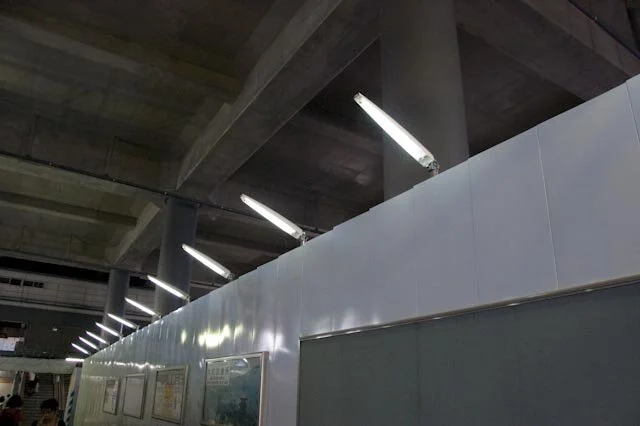“You can’t have a light without a dark to stick it in.”
- Arlo Guthrie
Throughout Japan, one finds that there is something strangely and uncannily consistent about the back streets of its towns and cities, whether one is in Tokyo, Nagasaki, Sapporo, Kyoto, Ise, Takayama, Hiroshima, Kurashiki, Kanazawa, Kichijoji. This familiar quality is not obvious during the daytime; everything is lit in the same daylight, and there is entirely too much to look at, yet nothing to focus on. But at night, when things become muted, the quality of light becomes much more intimate. One side of the street becomes illuminated while the other side remains in darkness. Shadows become pronounced. The space between street and building changes depending on the source and direction of light.
This consistent quality of light found throughout Japan’s towns and cities eminates from the ubiquitous Japanese Fluorescent Street Lamp. The fixture consists of a pelican beak shaped metal shade fabricated to match the length of the single fluorescent bulb which it covers. Unlike its typical western counterparts which project light directly down onto the street below, the Japanese street lamp’s metal shade is attached to a hinged connector, allowing the fixture to be adjusted for optimal directionality. The fixture can be placed on a pole, hung from a building, mounted atop a construction fence, or attached to a sign post. Ironically, despite its inherent flexibility, the fixture is almost always oriented at a 30 degree angle from the horizontal, illuminating the buildings and spaces on the other side of the street, and placing the building and spaces behind in darkness. Things that you never noticed during the daytime are now revealed at night: materiality and space, lightness and darkness.
Essay Excerpt
Essay & Photography by Robert Hutchison











